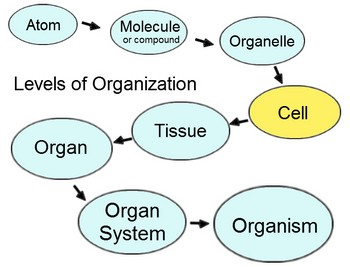 Science
Science
 Biology
Biology

Don's Home
 Science
Science
 Biology
Biology

| Contact |
|
Composition: The human body contains about 100,000,000,000,000 (100 Trillion) cells. The adult human body contains approximately 60% water, and so makes up a significant proportion of the body, both in terms of weight and volume. Water content can vary from a high 75% in a newborn infant to a lower 45% in an obese person. The vast majority of cells in the human body are not human at all; rather they are of bacteria, archaea Human Body Systems
Tissues: (From PhysiologyProject - Cells to Systems)
An Introduction to Physiology (deanza.edu) Human Anatomy and Tissues Help | Education.com Organ Systems: Organs are composed of two or more of the four kinds of tissue.
Homeostasis: From the earliest days of physiology - at least as early as the time of Aristotle- physicians recognized that good health was somehow associated with a balance among the multiple life-sustaining forces ("humors") in the body. Homeostasis is a state of dynamic consistency. In such a state, a given variable like blod glucose may vary in the short term but is stable and predictable when averaged over the long term. Senses - part of Nerve system: Sight, Sound, Smell, Taste, and Touch Aristotle might consider this evidence for the hierarchy of senses he proposed in the fourth century B.C. His rankings were based on which senses were most important for us to experience and survive in the world. The top sense was sight, followed by hearing, smell, taste and then touch. Sight and hearing allow us to sense things from a distance and so were deemed critical for survival, whereas taste and touch require contact. Smell fell somewhere in the middle. The Five Senses | visiblebody.com Links: Human Anatomy & Physiology: Table of Contents Human Anatomy Model, Anatomy Chart, Anatomical Chart | InnerBody Return to Science
|